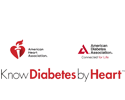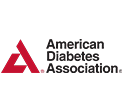Does More Data = More Accurate Results?
Every year U.S. News & World Report comes out with its “Best Hospitals” rankings, and providers wear them like a badge of honor. No doubt the recognition is prestigious. But how many people know why hospitals are ranked as they are? We decided to dig a little deeper and break down the methodology behind the rankings. What we found might surprise you.
“Best Hospitals” scores top hospitals across 16 specialties, from Cancer to Urology. For 12 of the 16 specialties, the rankings are based on performance measurements in structure, process and outcomes. Rankings in the remaining four specialties are based on hospital reputation as determined by a physician survey.
The methodology has evolved since the list was first published in 1990, transitioning from a heavy reliance on the reputation of hospitals (based on surveys of medical specialists) to incorporating more hard data to determine which providers make the cut. In an effort to increase accuracy and develop more objective, higher scoring methods, U.S. News & World Report moved away from expert opinion as a major factor of its criteria. Reputation now comprises only 32.5% of the overall score, except for hospitals in the areas of ophthalmology, psychiatry, rehabilitation and rheumatology.
The clinical data now used as the primary basis to rank hospitals measure patient outcomes and processes of care, based on factors including mortality, nurse staffing and advanced technologies. Hospitals also have to meet specific minimums for patient volume and are immediately considered high performing if they have a specialty like cancer or cardiology, among many others.
The power in this report lies in the objectivity as well as the information sharing from multiple, well-respected health care organizations and databases that exist as treasure troves for comprehensive patient information. The continuum of survey strategy — structure, process and outcome — defines essentially every step of the patient experience, from diagnosis to treatment to outcome.
For decades, much of patient care revolved around anecdotal teachings and recommendations. Hospital choices for individuals with complicated conditions often occurred subjectively and by word-of-mouth from both patients as well as caregivers. The strength in the “Best Hospitals” study design lies in the breadth of specialties, objectivity, number of hospitals, as well as the reachability and understandability of the results to the general public. As the number of survey variables continues to increase by virtue of an aging population and the emergence of newer diseases and a greater number of treatment options, survey criteria will evolve and may correlate patient cost to outcome. In other words, how much health care bang does one get for the buck?
For a detailed overview of the methodology behind “U.S. News & World Report’s Best Hospitals,” click here.
Is this system for ranking hospitals as objective as it could be? Does making the qualification guidelines more data-driven increase the reliability of the outcomes?


















